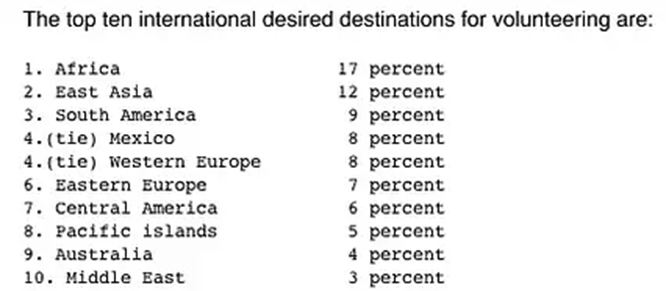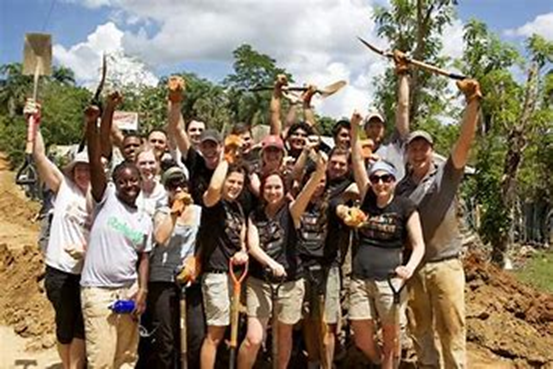Voluntourism - What's the Big Idea?
- lowrimerfyn
- Dec 7, 2022
- 5 min read
Have you ever considered volunteering abroad over a summer or to gain experience? Well, approximately 970 million people volunteered in the past year (Diez de Medina, 2017), many being traditionally Western 16-25 year olds seeking an impactful experience. However, in present day, we are now rebuilding and reframing the post-pandemic world we find ourselves in, under a sustainable light. With this in mind, before I discuss the ever-growing volunteer tourism industry and how you can ethically participate, it is important we address sustainability today, especially within the context of volunteer tourism to understand how to make a world of (positive) difference.
The current ‘buzz word’ of sustainability can take form in a myriad of ways according to different people. However, there have been a strand of global definitions taking hold to help contextualise our daily lives. The considered most widespread definition that resonates with many is that published in 1987, when the United Nations Brundtland Commission defined sustainability as “meeting the needs of the present without compromising the ability of future generations to meet their own needs.” (United Nations, 2022). This can encompass many aspects of modern society, including developmental disparities, infrastructure and technology as well as environmental management. Furthermore, these aspects can be categorised into the “triple bottom line”. Originally, in 1994, author and entrepreneur, John Elkington, built upon the concept of the triple bottom line (TBL) in hopes to transform the current financial accounting-focused business system. Yet, as a result of the triple bottom line theory and application, some businesses began to realize the connection among environmental health, social well-being and the organization’s financial success and resilience (University of Wisconsin, 2016). This model captures sustainability’s three central pillars: environmental protection, social justice, and economic development. (Sustainability Success, 2022) Pictured below is a typical Venn diagram of the triple bottom line. In essence, by utilising the triple bottom line, you are questioning if a practice is socially viable, environmentally bearable, and economically profitable? The TBL is often found as a primary definition and is now a global model for sustainability, certified B Corporations bring this model to life. A B Corporation Certification is a verification by B Lab to meet high standards of social and environmental performance, transparency, and accountability (B Lab UK, 2022). So, as we progress to considering what type of vigilance we should hold surrounding our sustainable practices, certifications such as B Corps can be useful knowledge to us as consumers in making sustainable-conscious decisions; including that of when and where to volunteer abroad. If you’d like to explore this further, you can find a list of B Corporations at : The Complete List of B Corps - Ripple Marketplace.

(Sustainability Success, 2022)
Now we have framed how to approach sustainability, let’s introduce our divisive focus of volunteer tourism – often coined as voluntourism. Largely planting its roots in the 1990’s, volunteer tourism was initially researched as a niche sector stemming from the branch of eco-tourism (Wearing and McGehee, 2013). From this, a primitive definition emerged “those tourists who, for various reasons, volunteer in an organized way to undertake holidays that might involve aiding or alleviating the material poverty of some groups in society, the restoration of certain environments, or research into aspects of society or environment” (Wearing, 1993). But how do we understand volunteer tourism today? Ultimately there are many definitions available each with their own connotations, yet in its simplest form it is defined as “volunteer tourism is a type of tourism where an individual will travel abroad to a destination that is predominantly considered ‘undeveloped’ or ‘developing’ to offer their support to those in need.” (Stainton, 2019) The cliché case of volunteer tourism in the media would widely be recognised as high school leavers building houses in under-developed regions. At surface level, this is seen as philanthropic, and to benefit both the volunteers and the local community and often can be. However, throughout this blog I will explore the extent of this positive impact, highlight the harm caused by many forms of voluntourism and how to volunteer abroad ethically, leaving an overall positive impact when seeking out these experiences.
Voluntourism is a $3 billion a year industry (Gharib, 2021) that is now being questioned as niche tourism due to its increased accessibility thanks to globalisation and its popularity across the western world. For example, TRAM (Tourism Research and Marketing) found in 2008 that volunteers typically pay on average £2,000 for the privilege of volunteering (Stainton, 2019). So, like any profitable industry, there will be perpetrators of malpractice and exploitation as demand increases in terms of ‘unique’ experiences abroad. But firstly, who generated this multi-billion-dollar industry and why? According to an interest survey amongst American highschoolers conducted by NSHSS in 2020 at least 48% of those surveyed are considering volunteering abroad. (Hanover Research, 202AD) There are also many organisations targeting this demographic, such as the International Citizens Service and Project Abroad. This volunteering also typically takes place in underdeveloped countries or formally LEDC’s. The table below shows the most common host countries for voluntourism according to Horoszowski in 2013:

(Horoszowski, 2013)
So now we’ve distinguished the typical customer and host of voluntourism, the next question would naturally be, what physically takes place during these rewarding trips? Well, the table below demonstrates one way to categorise the activities of these niche tourists, but it is important to consider that this isn’t an exclusive categorisation.

(Stainton, 2019)
A notorious example of voluntourism is teaching abroad upon completion of a TEFL course (Teaching English as a Foreign Language) where prices for this qualification range from £60 to £200. Currently, there are 140,000 TEFL qualified teachers working globally, largely on a voluntary basis to gain experience (TEFL org, 2022).
There are countless organisations and agencies such as TEFL enabling voluntourism globally, but what are the benefits of volunteering abroad; why do people do it year upon year? There are two perspectives on this: motivations for the volunteers and benefits of such for the host destination. In terms of a positive volunteer experience, there is a wealth of reasons to volunteer abroad published by voluntourism operators to gain traction. However, I have collated the most frequent and reputable reasons for you to consider investing in this niche tourism experience.
1. Boosts perceived employability: A primary USP used by travel operators to promote pursuing voluntourism with them is the promise of increased employability after volunteering abroad. For example, the UN states on their volunteering page that “after volunteering abroad, you can be sure that your curriculum vitae will stand out. Employers appreciate the ability to adapt, to think outside the box and to embrace diversity. The enriching professional and life experiences you have gained through volunteering will not go unnoticed” (UN Volunteers, 2022).
2. Volunteer self-development: Volunteering abroad is perceived as an act of altruism. In doing so, volunteers will also be engaged in the process of personal development, self-discovery, and (re)-evaluation of personal values (Pan, 2012). This goes hand in hand with the philanthropic image many people pair with Voluntourism.
On the contrary, how are the communities on the receiving end of voluntourism benefiting Caridad y Ocerín (2007) explain that the main levels on which host communities benefit are economic followed by social, with virtually no environmental benefits whatsoever. (Hernandez-Maskivker et al 2018) As food for thought, with the absence of environmental benefits, does this activity satisfy the triple bottom line as sustainable? Moreover, McGehee (2012) also suggests that voluntourism can have a positive impact on local communities such as resource mobilization, participation in social movements, and social change. (Hernandez-Maskivker, Lapointe and Aquino, 2018). For example, aside from social impacts, generally volunteering tourists are free labour for the struggling host communities, such as ecotourists could act as a free workforce to maintain sustainable development efforts (Brown, 2005).
After exploring the who, what, where and why of Voluntourism and its subsequent widespread benefits, paired with what it means to practice sustainably, we are now equipped to question the limitations and issues associated with Voluntourism in present day.



Comments